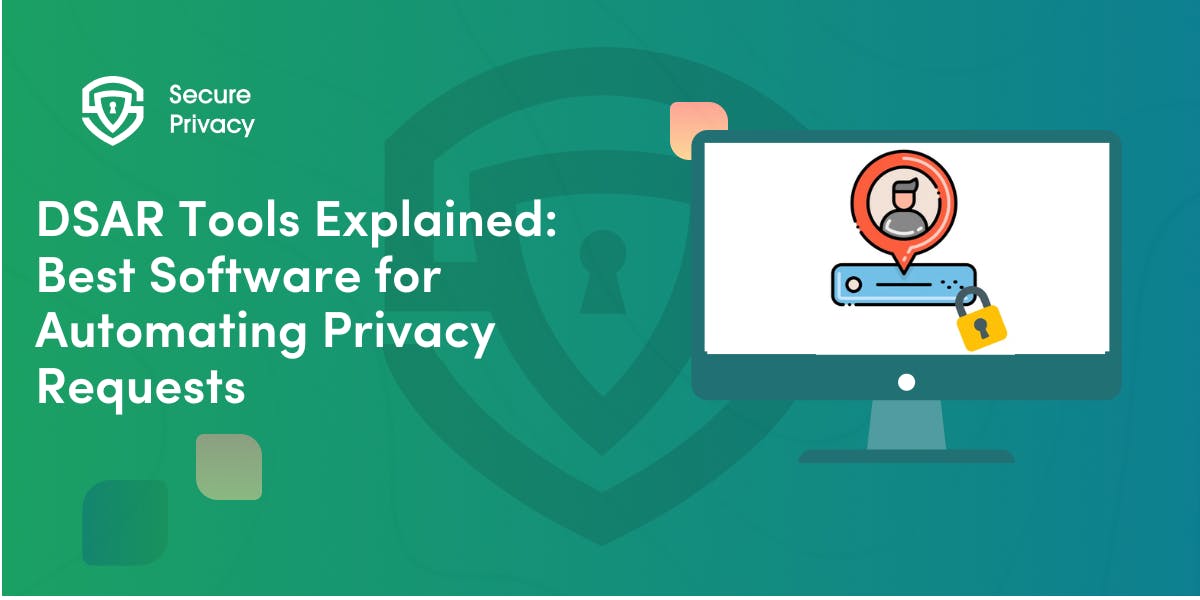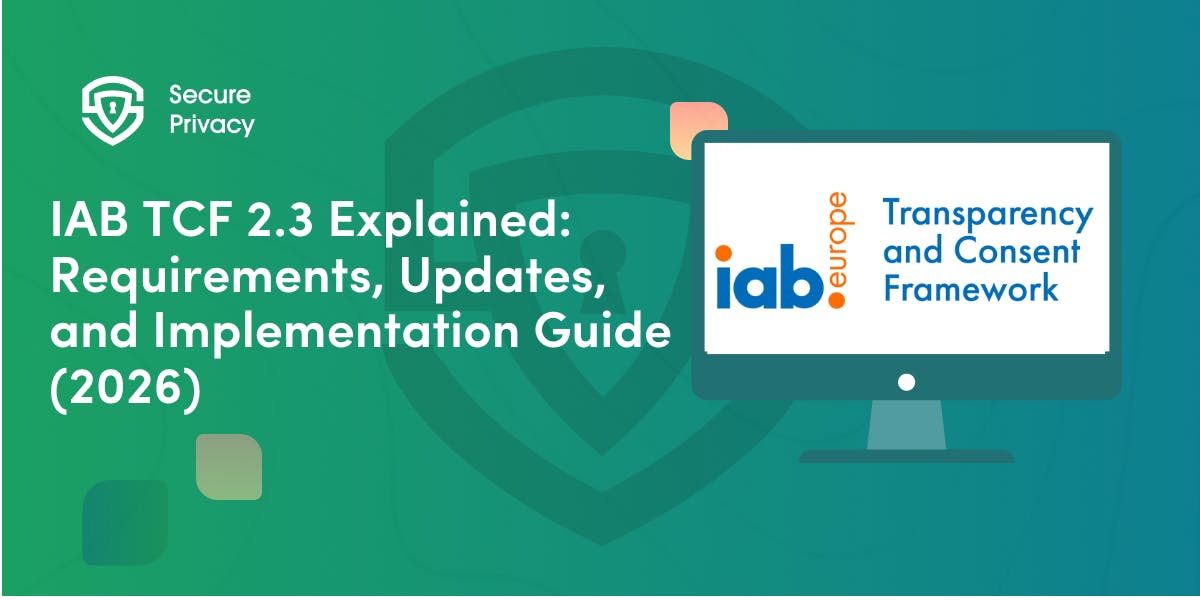Using DSAR Custom Controls in Secure Privacy
Secure Privacy has launched advanced DSAR form customization capabilities that transform how organizations handle Data Subject Access Requests. These new DSAR custom controls allow privacy teams to create tailored forms that match their specific workflows, improve user experience, and maintain brand consistency.
DSAR form customization addresses a critical challenge in privacy management. Standard forms often collect unnecessary information or miss organization-specific requirements. This creates friction for data subjects and inefficiency for privacy teams processing requests.
The new customization features enable organizations to build forms that collect exactly the information they need while providing clear guidance to requesters. This approach improves compliance outcomes, reduces processing time, and demonstrates transparency to data subjects and regulators.
What's New in DSAR Customization
Secure Privacy's enhanced DSAR custom controls introduce several powerful capabilities:
Custom Form Controls: Add various input types including text fields, checkboxes, dropdown menus, and radio buttons. Each control supports customizable labels, placeholder text, and validation requirements to guide users effectively.
Flexible Field Organization: Drag-and-drop functionality allows easy reordering of form fields. Organizations can arrange controls in logical sequences that match their internal processing workflows and user expectations.
Dynamic Field Management: Remove unnecessary fields by hovering and clicking the trash icon. This eliminates clutter and focuses user attention on relevant information for their specific request type.
Real-Time Preview and Updates: The edit interface provides immediate visual feedback showing how changes appear to end users. One-click saving updates live forms instantly without technical deployment requirements.
Enhanced User Guidance: Built-in instruction capabilities help requesters understand what information to provide, reducing incomplete submissions and follow-up communications.
Step-by-Step Customization Guide
Setting up DSAR form customization in Secure Privacy follows a straightforward process that requires no technical expertise.
Accessing Form Customization
Navigate to your Secure Privacy dashboard and locate the Templates section. Select your active privacy template (such as EU GDPR) that corresponds to your compliance requirements.
Within the template settings, find the Data Request Form option. Ensure the "ENABLE DATA REQUEST FORM" toggle is set to the "ON" position to activate customization features.
Adding Custom Controls
Click the "Edit" button in the top-right corner of the form preview to enter customization mode. This opens the editing interface where you can modify form structure and content.
Navigate to the Text tab within the editor. Click the "+ Add control" button to access available control types. Choose from text inputs, checkboxes, radio buttons, dropdown menus, and other form elements based on your requirements.
Configuring Control Properties
For each added control, configure essential properties including field labels, placeholder text, and validation rules. Clear labels help users understand what information to provide, while placeholder text offers additional guidance.
Set required field indicators for essential information like identity verification details. Optional fields can collect supplementary information that aids request processing without creating barriers for requesters.
Organizing Form Structure
Use drag-and-drop functionality to arrange controls in logical order. Consider the user journey and information flow when positioning fields. Group related information together to create intuitive form sections.
Position identity verification fields at the beginning, followed by request type selection, specific request details, and any supplementary information. This organization matches user expectations and streamlines completion.
Testing and Deployment
Preview your customized form to ensure proper display and functionality across different devices. Test form submission to verify all controls work correctly and required validations trigger appropriately.
Save your changes to update the live form immediately. The system automatically applies modifications without requiring additional deployment steps or technical intervention.
Example Customization Walkthrough
Consider customizing a GDPR DSAR form template to include a specific "Right to Erasure" request field that helps your organization process deletion requests more efficiently.
Right to Erasure Field Configuration
Add a new text area control labeled "Right to Erasure Request Details." This field collects specific information about data deletion requests, improving processing accuracy and reducing follow-up communications.
Configure the placeholder text to read: "Please specify which personal data you want deleted and provide any relevant account numbers, transaction IDs, or time periods to help us locate your information."
Set this field as required for erasure requests but optional for other request types. This conditional logic ensures appropriate information collection without creating unnecessary barriers for other request categories.
Request Type Classification
Add radio button controls for request type selection including Access, Rectification, Erasure, Restriction, Portability, and Objection. This classification helps route requests to appropriate team members and sets proper processing expectations.
Include brief descriptions for each request type to help data subjects select the correct option. Clear classification reduces processing delays and improves request accuracy from the outset.
Best Practices for DSAR Form Customization
Effective DSAR form customization balances comprehensiveness with usability while maintaining regulatory compliance and operational efficiency.
Simplicity and User Experience
Design forms with user experience as the primary consideration. Avoid overwhelming requesters with excessive fields or complex language that might discourage submission or lead to incomplete requests.
Use clear, plain language in field labels and instructions. Technical or legal terminology can confuse users and result in incorrect information that complicates processing efforts.
Implement progressive disclosure by showing relevant fields based on request type selection. This approach reduces cognitive load while ensuring comprehensive information collection when needed.
iOS and tvOS users need access to their consent data too—learn how to implement DSAR capabilities in iOS + tvOS.
Brand Alignment and Professional Presentation
Customize Data Subject Access Request forms to reflect your organization's brand identity and communication style. Consistent presentation builds trust and demonstrates organizational attention to detail.
Maintain professional tone throughout form content while keeping language accessible to diverse audiences. Consider translation requirements for organizations serving multilingual communities.
Compliance and Documentation
Ensure customized forms collect all information required by applicable privacy regulations. GDPR Article 12 requires clear communication about request processing, while CCPA has specific verification requirements.
Document your customization decisions and rationale for audit purposes. Maintain records of form versions and changes to demonstrate compliance evolution and continuous improvement efforts.
Include clear statements about data processing, response timeframes, and requesters' rights throughout the form. This transparency meets regulatory requirements while building user confidence.
Operational Integration
Design forms to integrate seamlessly with your internal request processing workflows. Collect information that helps route requests appropriately and reduces manual processing requirements.
Consider adding internal reference fields that help track requests through your system while remaining invisible to end users. This approach improves operational efficiency without impacting user experience.
Conclusion
DSAR custom controls in Secure Privacy represent a significant advancement in privacy request management. These features enable organizations to create forms that balance regulatory compliance, user experience, and operational efficiency.
The customization capabilities address real challenges privacy teams face when processing data subject requests. By tailoring forms to specific organizational needs, teams can reduce processing time, improve accuracy, and demonstrate transparency to stakeholders.
Organizations using these features report improved request completion rates, reduced follow-up communications, and more efficient internal processing workflows. The ability to update forms quickly as requirements evolve provides ongoing operational flexibility.
Ready to streamline your DSAR processes? Explore Secure Privacy's custom controls feature and transform how your organization handles data subject requests while maintaining the highest compliance standards.
Get Started For Free with the
#1 Cookie Consent Platform.
No credit card required

What is Cookie Consent? A Quick 2026-Ready Glance
Your website loads. Cookies track users. But without proper cookie consent, you're violating GDPR — risking fines up to €20 million or 4% of global revenue. Cookie consent is the legally required mechanism by which websites obtain explicit user approval before deploying non-essential tracking technologies. This requirement stems from GDPR Article 4(11) and the ePrivacy Directive, mandating that consent must be freely given, specific, informed, and unambiguous.
- Legal & News

DSAR Tools Explained: Best Software for Automating Privacy Requests
You're drowning in data subject access requests. Manual searches through dozens of systems miss regulatory deadlines and expose organizations to fines starting at $2,500 per violation. The solution? DSAR tools — purpose-built software that automates the entire process of responding to data subject access requests, from intake to delivery.
- Legal & News

IAB TCF 2.3 Explained: Requirements, Updates, and Implementation Guide (2026)
Your ad revenue dropped 40% overnight. Google stopped bidding on your inventory. Your DSP partners flagged your traffic as non-compliant. The culprit? An outdated TCF 2.2 consent string after the February 2026 enforcement deadline.
- Legal & News
- Cookie Consent

